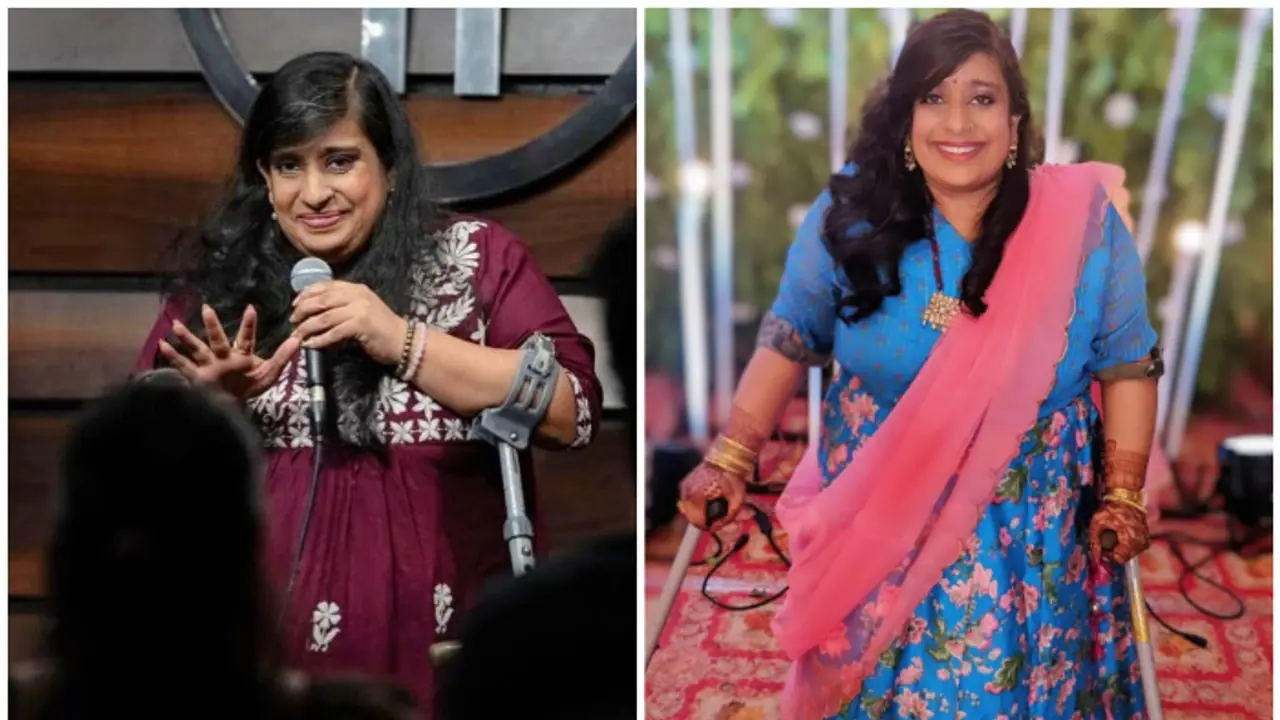Being the only stand-up comedian in India with spina bifida has made Sweta aware of the deeper meaning behind her comedy, which is to raise awareness of the problems faced by those with disabilities and provoke deeper thought from her audience.
The 36-year-old Sweta was born with spina bifida, a disorder that causes a gap in the spine due to improper development of the spinal cord and spine. She had physiotherapy and surgery right before school started, which allowed her to walk with crutches. Typically, women with this illness grow to a height of approximately 4.6 feet, less than the 5.2 feet average for all women. Talking about her disease with NDTV, Sweta said, “Doctors said I won’t survive for more than two months and if I do, I won’t be able to walk until the age of 10."
While recovering from a fracture in 2016, Sweta Mantrii experienced a revelation while watching many stand-up comedy videos on YouTube. She thought, "I’m witty too. Why not merge that with comedy about disability?” This inspired her to embark on a comedy journey while also raising awareness for her disease.
Her inspiration for venturing into comedy came from her fondness for Indian comics such as Daniel Fernandes, Azeem Banatwalla, and Aditi Mittal. Later on, she studied the work of international comics including Jerry Seinfeld, Taylor Tomlinson, Ali Wong, and Hannah Gadsby. Although Sweta initially intended to use humor to express her own problems as a disabled woman, her goals quickly changed. Her goal was to demonstrate that individuals with disabilities are capable of laughing at themselves as well as making jokes.
When Sweta started performing stand-up comedy in her hometown of Pune in 2016, she observed that people would frequently shy away from her on stage. Talking about her initial days, Sweta said, “It was tough because people weren’t used to the idea of a disabled woman doing comedy; it was a real downer."
It wasn't long before she realized how difficult it would be to persuade people to accept her as a comedian whose routines revolve around her disability. In order to adjust her jokes to the audience's mood, she read the room before starting her sets. It took a while to figure out which jokes worked and which didn't. She said, “There were times when people seemed to feel awkward to watch a disabled person go on the stage and get uncomfortable to laugh at their jokes."
A comedian's first question upon accepting a gig offer is usually, "How many minutes will I be performing for?" What is the salary? Sweta is primarily concerned with the accessibility issue. She shared, "Is the venue accessible for me? Is there an accessible restroom available? How many steps are there, and how long will it take to get to the stage? Will I even be able to reach the stage?”
“The term ‘stand-up’ in stand-up comedy could be seen as somewhat ableist, particularly from a disability-focused perspective,” Sweta shared.
“The typical image of a stand-up comedian involves a performer standing on stage, which can be at odds with the accessibility-centered narrative we strive for today. Generally, people with disabilities are imagined working from home or, if they’re comedians, performing on Zoom or writing funny blogs. Choosing to perform stand-up comedy in person is in itself a rebellious act,” she added.
Being the only stand-up comedian in India with spina bifida has made Sweta aware of the deeper meaning behind her comedy, which is to raise awareness of the problems faced by those with disabilities and provoke deeper thought from her audience.
